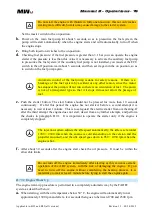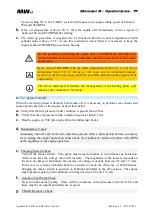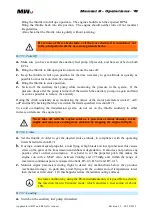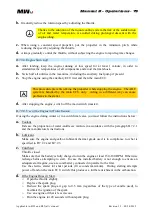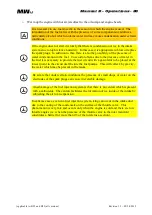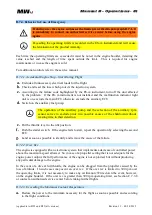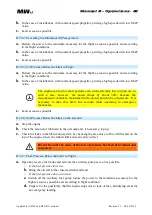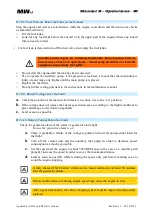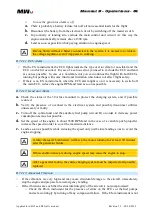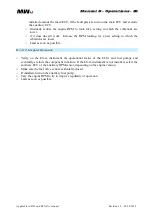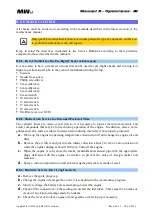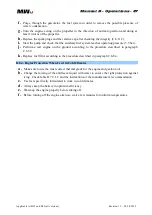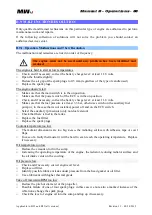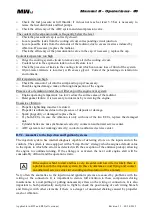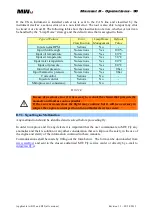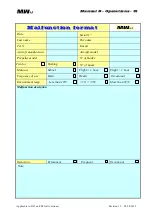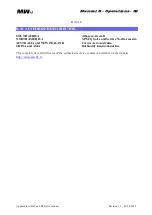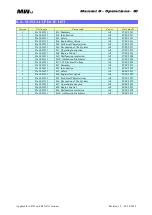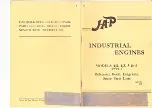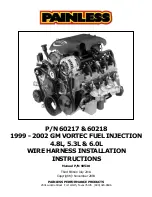
Applicable to: B22 and B25 (a ll versions)
Revision 1.3 – 02/24/ 2015
Manual B – Operations
-
89
o
Check the fuel pressure at full throttle: if it does not reach at least 3.5 bar is necessary to
revise the fuel distributor and fuel pumps.
o
Check the efficiency of the ADC system and decompression valve.
The coolant in the expansion tank is frequently below the level
o
Check the pressurized cap is correctly closed.
o
Locate possible leaks from the cooling circuit, corresponding circuit junction.
o
Locate possible leaks from the elements of the radiator, due to excessive stress induced by
vibration. If necessary, replace the radiator.
o
Check the efficiency of the pressurization valve in the cap: if necessary, replace the cap.
Coolant temperature too high
o
Purge the cooling system circuit to remove any air in the cooling circuit.
o
Coolant
level in the expansion tank too low. Restore level.
o
Check the presence of leaks in the cooling circuit which can cause loss of fluid of the system.
o
Glycol-water mixture is incorrect, with excess glycol. Correct the percentage in relation to
environment.
Oil temperature too high
o
Check the amount of oil into the sump and top up if necessary.
o
Possible engine damage: make a thorough inspection of the engine.
Presence of oil emulsion under the oil filler cap or the engine vent system
o
Engine operating temperature too low: reduce the surface area of the
radiator.
o
Head gasket failure: it is necessary to intervene by reviewing the engine.
Excessive vibration
o
Propeller tightening incorrect: restore it.
o
Propeller is unbalanced due to the presence of deposits or damage.
o
Spark plugs dirty or damaged: replace them.
o
Try both ECUs: in case the vibration is only with one of the two ECUs, replace the damaged
unit.
o
Cylinder banks are not synchronized correctly: contact an authorized service center.
o
ADC system is not working correctly: contact an authorized service center.
B.9.2. Anomalies to the Injection and Ignition Systems
The injection system has internal diagnosis capable of detecting errors on the inputs and on the
controls. The system is also equipped with a “Limp Home” strategy which assigns a default value
to the inputs in which the error was detected (with the exception of the entrance pickup) allowing
the engine to continue running. If the strategy is activated, the next cold engine start will be
considerably difficult and the operation erratic.
If the engine is hard to start and has a very irregular cold low idle it is likely there is
a problem with the injection system. In this circumstance avoid flying and contact
an authorized service center for encoding and resolution of the anomaly.
Very often the anomalies to the injection and ignition systems are caused by problems with the
wiring or the connectors. It is important to devote full attention to these components during
maintenance to avoid pulling or putting unnecessary stress on the wiring or connectors. It is also
important to both periodically and prior to flight to check the positioning of each wiring branch
and fixing it with other elements if there is a danger of unwanted shaking caused by propeller
wash or vibration.


